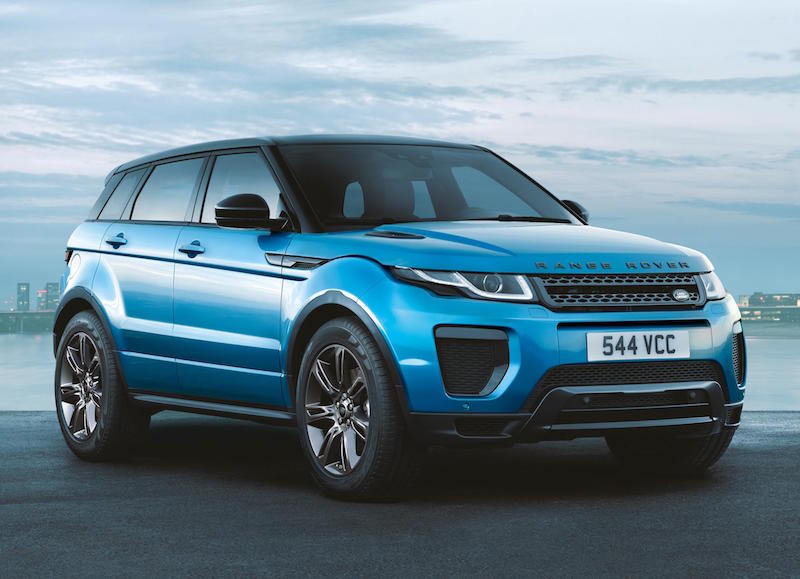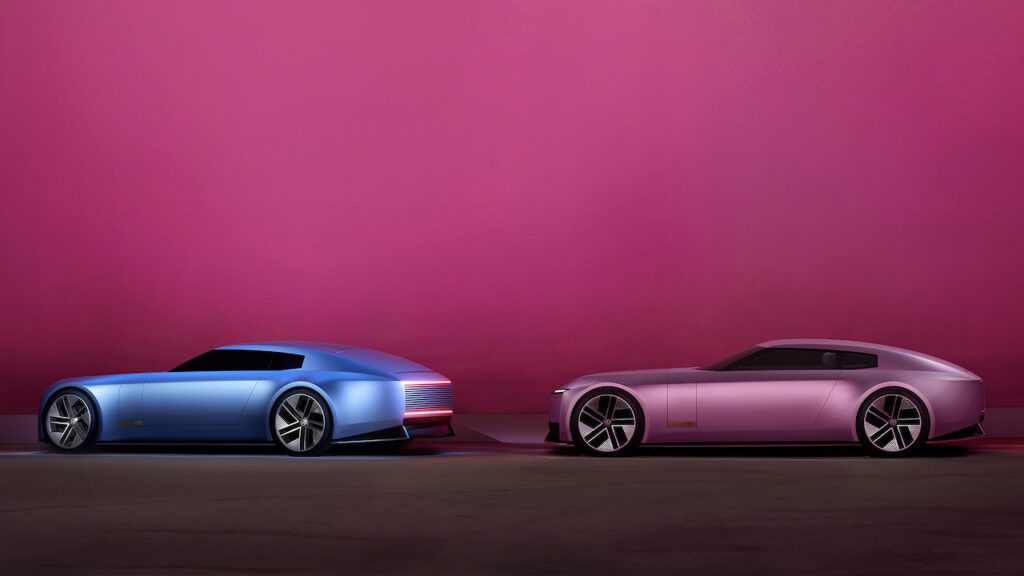Included in this analysis:
- Summary
- Recent performance
- Sales and model plans
- Production developments
- Outlook
- Downloadable data (Excel)
- Production by brand (2020-2024)
- Production forecasts by brand (2020-2029)
Summary
- Tata Motors (TM) reported wholesales of 1.34 million vehicles for the year to March 2025, excluding sales by Jaguar Land Rover’s (JLR) Chinese joint venture. More than 70% of the vehicles were sold either by TM’s passenger vehicle operation or by JLR, the remainder being light-, medium- and heavy-commercials sold by TM’s commercial vehicle (CV) operation.
- With effect from 1 October 2025, that CV operation has been demerged from TM Group into TML Commercial Vehicles (TMLCV), a wholly owned subsidiary which will be listed separately on the stock market. The Tata Group will remain majority shareholder in both companies.
- This update primarily focuses on the passenger car business. A separate report on TMLCV will be published in 2026.
- Excluding the acquisition of JLR, TM’s efforts to reduce its reliance on the Indian market have met with limited success thus far. Passenger vehicle exports amounted to just 2,700 units in the year to March 2025.
- After more than a decade of lacklustre performance in the passenger car sector, the Tata brand’s latest models, particularly its SUVs/Crossovers, have enjoyed significant success. The brand has expanded its coverage of the Indian market and plans to widen its range further over the forecast period.
- Like several other manufacturers, JLR’s electrification plans have been rejigged in response to the slowing pace of battery electric vehicle (BEV) demand growth.
- TM’s passenger vehicle output (including CJLR) narrowly exceeded one million units in calendar year 2024 but is set to fall by 10-11% in 2025. This is primarily because of unanticipated events such as tariff disruption and a cyber-attack on JLR.
- A return to growth is anticipated over the forecast period, helped by the rising Indian market and new model launches, but the conclusion of JV production in China and Jaguar’s attempt to target lower volume prestige sectors will constrain the growth at group level.
Recent performance
Year to March 2025
In 2024/25, TM’s consolidated revenue edged 1.3% higher to a record INR 4,397bn, helped particularly by a weaker rupee versus sterling, which turned a negligible drop in JLR’s sterling revenue into a 3.8% increase in rupee terms. The TM passenger vehicle (PV) division reported a 7.5% drop in revenue, and there was a 4.7% decline in the CV division.
Group EBIT also edged higher, up 0.5% to INR 34.7bn, keeping the margin at 7.9%. JLR was again the most significant contributor, accounting for 77% of the total compared with 75% in 2023/24. The PV division reported a 55% drop in EBIT, mainly due to lower volumes, weaker mix and weaker net pricing.
Year to March 2026
In the first quarter of 2025/26, group EBIT nearly halved as the company was hit by volume declines in all businesses and a 55% fall in JLR’s EBIT (in rupee terms) as it was impacted by US trade tariffs and tariff uncertainty.
At the time of writing, JLR soon hopes to resume production after a month-long shutdown following a cyber attack. The company has not yet quantified the cost of the attack, but it will clearly be substantial.
Sales and model plans
Tata brand
TM’s PV operation sold 556,400 units in 2024/25, nearly all in the domestic market, with exports accounting for just 2,700 units. The company has long talked up its export plans, but the ambition has never been realised. PV exports in 2024/25 were confined to Bhutan, Mauritius, Nepal and Sri Lanka, but the company announced in August 2025 that it was returning to the South African market after a six-year hiatus. It should be noted that TM is currently confining itself to RHD markets, as it does not yet have the prospective volumes to justify the investment to produce LHD models.

In the Indian PV market, TM is usually in third place behind Hyundai and the dominant Maruti Suzuki. However, TM has closed the gap with Hyundai in recent years and outsold it in some months.
In calendar year 2024, the Tata Punch micro-SUV became India’s best-selling model three years after its launch. The 10th place Nexon was TM’s next most highly placed model, followed by the Tiago in 24th, Altroz (31st) and Curvv (40th), which was launched in August 2024.
The Curvv is a sub-compact crossover positioned above the Nexon and will be followed in late 2025 by the larger Sierra, reviving a name that TM last used on a 1991-2003 model.
In 2027, two years later than first planned, the all-new Avinya and Avinya X BEVs are expected, but further delays to this launch should not be ruled out. TM has been discussing as many as five models in the Avinya range (P1-P5) and developing Avinya as a premium BEV brand, though only the 2027 launch has been signed off at the time of writing. An all-new compact SUV, codenamed Scarlet, is also expected in 2027.
JLR
Wholesales of Jaguar and Land Rover models, excluding the Chinese joint venture, dipped by 0.1% to 400,900 units in 2024/25. Range Rover models accounted for 56% of the total, Defender for 28.8%, Discovery 8.5% and Jaguar 6.7%. Retail sales, including 34,150 units sold by the Chinese joint venture, were 0.7% lower at 428,850 units.

North America overtook China to become the biggest single retail market for JLR in 2024/25, with a 27% rise to 120,300 units. Sales also grew in the UK, up 2% to 81,350 units, but sales in China fell 19.7% to 83,660 and in non-UK Europe by 8.5% to 71,570 units. Elsewhere there was a 3.5% fall to 71,990 units.
JLR’s best-selling model in 2024/25 was again the Defender, with retails of nearly 113,000 units. The Range Rover was next at 75,870 units, followed by the Range Rover Sport at 74,990.
In 2021, JLR announced its Reimagine strategy, a plan to make the company a net-zero carbon business by 2039 by focusing on modern luxury, sustainability, and electrification. Key aspects included transforming Jaguar into an exclusively electric luxury marque, developing BEV models for Range Rover, Discovery and Defender, and creating new brand worlds for each marque.
Like several other manufacturers, JLR’s electrification plans have been rejigged in response to the slowing pace of EV demand growth. Unlike other manufacturers, where Jaguar is concerned, JLR had pretty much ‘bet the farm’ on a rapid transition to EVs. In Europe, production of all Jaguar models except the F-Pace was ended in 2024, but the rollout of BEV successor models has been delayed.
Automotive World currently expects a four-door all-electric GT model, based on the Type 00 concept unveiled in December 2024, to be launched in late summer 2026, possibly badged I-type. A large saloon and a large crossover—a competitor to Bentley’s Bentayga—are expected in 2027. It’s possible these and other near-term timings will be affected by the September 2025 cyber attack. The aim for Jaguar is to push its slimmed-down range significantly upmarket, competing more with Bentley and Porsche than BMW and Mercedes, not that it has been much of a competitor to the latter two brands.

In Land Rover’s case, the main change is the planned extension to the life of internal combustion engine (ICE) models. For example, as recently as 2023, the company said its Halewood plant in the UK would become its first electric-only plant, but it has now decided to continue building ICE and hybrid models alongside the planned BEVs. Regarding the latter, the first is expected to be the all-electric Range Rover Velar, which is now expected in 2027. As Land Rover had not planned to go all-electric before 2030, the rollout schedule has not been changed substantially.
Full details of new model plans are provided in the appendix.
Production developments
India
In September 2024, TM held the ground-breaking ceremony for its new US$1.1bn EV manufacturing plant at Panapakkam, Tamil Nadu. The plant was expected to produce both Tata and JLR-brand vehicles, but JLR withdrew from the project in March 2025, mostly due to slowing demand for EVs but also the difficulties in sourcing components locally. TM is now expected to build other models at the plant, including ICE models.
At the beginning of 2024 TM began production at its plant in Sanand, Gujarat, which it acquired from Ford in January 2023.
In June 2024, the Tata Group signed an outline deal to build a US$1.6bn lithium-ion cell plant. Work on the plant, also in Sanand, is expected to start in less than three years. It will have initial manufacturing capacity of 20GWh, which could be doubled in a second phase of expansion.
UK
Following the closure of the Castle Bromwich Jaguar plant in mid-2024, JLR operates two assembly plants in the UK: Halewood and Solihull. At Halewood, which builds the Evoque and Discovery Sport, JLR is investing US$660m to build the new generation of EVs. Production will now take place alongside ICE models, the lives of which are being extended.
In early 2024, Agratas, Tata’s global battery business, confirmed it will build its first battery plant outside India in Puriton, Somerset. It is planned to produce 40GWh of battery cells annually, enough to supply approximately 500,000 passenger vehicles. Construction started in July 2024, and production was due to start in 2026 but has been pushed back to 2027.
Rest of world
Chery Jaguar Land Rover (CJLR), a 50/50 joint venture (JV) between JLR and Chery, is due to end production of the long-wheelbase versions of the Jaguar XE and XF in autumn 2025, as well as the Land Rover Discovery Sport and Evoque in 2026. The company’s manufacturing plant in Changshu, near Shanghai, first opened in October 2014.
The ending of current production follows a mid-2024 agreement to restructure the JV. Chery is to build a family of Freelander-branded EVs based on Chery architecture, with the first model launching in 2026. The agreement allows Chery to license the Freelander name in return for JLR receiving half of any profits. Once production of the current models has been phased out, JLR’s sales in China will all be supplied by imports. Automotive World expects the future Freelander production to be included within Chery’s consolidated numbers, so it is not included in the JLR production forecast.
Outlook
TM’s passenger vehicle output, including CJLR, exceeded one million units in calendar year 2024 but is set to fall by 10-11% in 2025 due to the adverse combination of:
- tariff disruption;
- the unplanned shutdown due to cyber attack on JLR;
- the planned ending of most Jaguar production:
- the beginning of winding up the CJLR operation.
The 2025 forecast assumes the JLR operation will be able to resume production in October, as the company currently expects.
A return to growth is anticipated in 2026 and beyond. Tata brand models are expected to benefit from the rising Indian market, with the company’s own forecast projecting a rise from 4.3 million units in 2024/25 to six million in 2029/30. Tata should be able, broadly, to keep pace with that rise. Automotive World doesn’t anticipate a major boost from exports, but, given the low starting point and the company’s intention to expand into new markets, we do expect some growth.
JLR volumes are expected to recover from the adverse events of 2025, but ending production in China and Jaguar’s attempt to target lower volume prestige sectors will constrain growth
Tata Motors LV production by country, 2020-29 (000s)
| Country | 2020 | 2021 | 2022 | 2023 | 2024 | 2025 | 2026 | 2027 | 2028 | 2029 |
| India | 170.4 | 331.2 | 530.0 | 556.2 | 567.7 | 540.0 | 607.6 | 690.1 | 759.8 | 765.5 |
| UK | 243.9 | 220.6 | 202.8 | 237.0 | 259.9 | 206.9 | 222.5 | 258.9 | 354.3 | 363.3 |
| Slovakia | 37.1 | 63.5 | 74.5 | 131.8 | 123.5 | 100.5 | 103.8 | 88.3 | 130.3 | 133.8 |
| China | 57.0 | 53.1 | 53.6 | 50.6 | 38.5 | 21.6 | 11.8 | 0.0 | 0.0 | 0.0 |
| Austria | 34.0 | 22.2 | 12.8 | 10.4 | 12.4 | 2.4 | 0.0 | 0.0 | 0.0 | 0.0 |
| Total | 542.3 | 690.6 | 873.7 | 986.0 | 1,002.1 | 871.4 | 945.7 | 1,037.3 | 1,244.4 | 1,262.6 |
